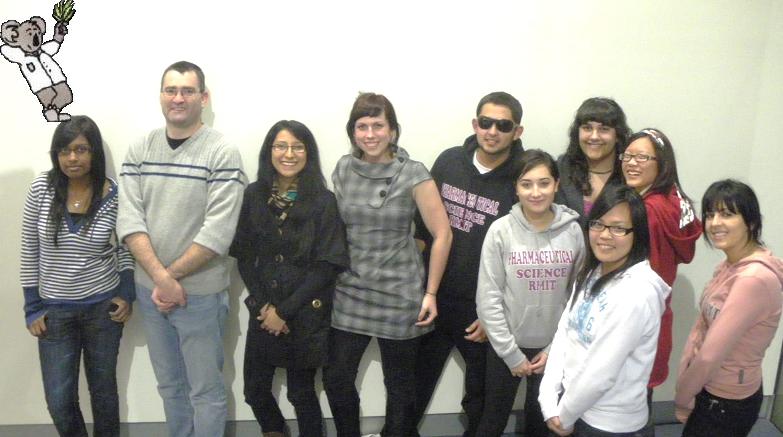Team:Victoria Australia
From 2009.igem.org
(→Victoria_Australia Preliminary project outline) |
|||
| Line 16: | Line 16: | ||
''''' | ''''' | ||
| - | == Victoria_Australia Preliminary | + | == <div style="width: 100%; height: 100%; color: #120cad; font-size: 28px; filter: progid:DXImageTransform.Microsoft.Glow(color=#6132fa, strength=8); -ms-filter: progid:DXImageTransform.Microsoft.Glow(color=#6132fa, strength=8);">Victoria_Australia Preliminary Project Outline</div> == |
''''' | ''''' | ||
The RMIT University iGEM (Victoria_Australia) team aims to build a biological lighting system via cell free transcription and translation (CFTnT). This project applies Synthetic Biology in a simple manner that could be efficient for everyday use. It was developed after the consideration of current energy and climate change issues. | The RMIT University iGEM (Victoria_Australia) team aims to build a biological lighting system via cell free transcription and translation (CFTnT). This project applies Synthetic Biology in a simple manner that could be efficient for everyday use. It was developed after the consideration of current energy and climate change issues. | ||
Revision as of 12:41, 27 August 2009
| Home | The Team | The Project | Parts Submitted to the Registry | Modeling | Notebook | Fundraising | Passport |
|---|
Victoria_Australia Preliminary Project Outline
The RMIT University iGEM (Victoria_Australia) team aims to build a biological lighting system via cell free transcription and translation (CFTnT). This project applies Synthetic Biology in a simple manner that could be efficient for everyday use. It was developed after the consideration of current energy and climate change issues.
A CFTnT system was chosen because in principle, the lysate used in the CFTnT system may be prepared from any type of cell. Hence, the team thought it would be of merit to develop an alternative light source, which could possibly be powered by a waste material as simple as grass clippings (cell lysate).
The team also hopes to address cellular and bioprocess problems that arise when employing a CFTnT system and is considering many novel approaches to creating a more sustainable system that can be scaled up for practical applications.
Initial experiments conducted by Victoria_Australia will focus on two cell-free systems derived from E. coli and wheat germ.
Current status: We've ordered basic materials, have designed a logo and spending a lot of time fundraising and writing letters for support. We are also holding a fundraiser charity auction on the 13th August and will describe this event more fully as our wiki evolves.
|-
|
|}
 "
"

